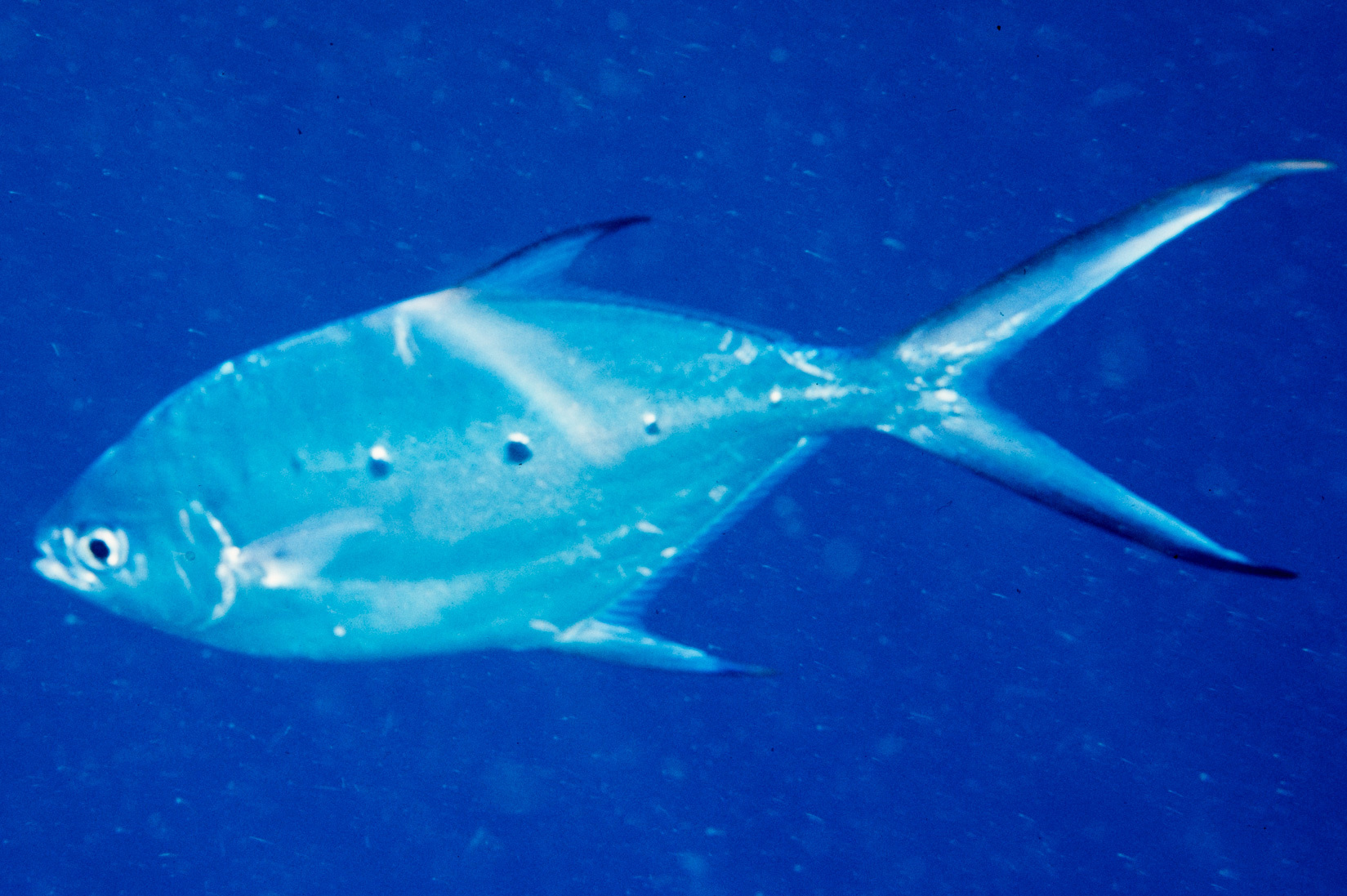- Classification
- ACTINOPTERYGII
- PERCIFORMES
- CARANGIDAE
- Trachinotus
- coppingeri
Swallowtail Dart, Trachinotus coppingeri (Günther 1884)
Other Names: Dart, Southern Dart, Southern Swallowtail, Surf Bream, Surf Trevally

A Swallowtail Dart, Trachinotus coppingeri, at the West Wall, Osprey Reef in the Coral Sea, Novemcer 1998. Source: Erik Schlogl / iNaturalist.org. License: CC By Attribution-NonCommercial
Summary:
A bluish-black dart becoming silvery-white below, with a series of 6 or 7 vertically elongate dark spots just above the lateral line in adults, anterior 2 spots above the pectoral fins. Spots absent or indistinct in juveniles.
An Australian endemic found in shallow coastal waters, often in the surf zone along sandy beaches.
An Australian endemic found in shallow coastal waters, often in the surf zone along sandy beaches.
Cite this page as:
Bray, D.J. 2021, Trachinotus coppingeri in Fishes of Australia, accessed 27 Jun 2025, https://fishesofaustralia.net.au/Home/species/2995
Swallowtail Dart, Trachinotus coppingeri (Günther 1884)
More Info
|
Distribution |
Endemic to eastern Australia, from the Daintree River, Queensland and reefs in the Coral Sea, to Rosedale, New South Wales; also the Lord Howe Province in the Tasman Sea. Inhabits shallow coastal waters, often in the surf zone along exposed sandy beaches. |
|
Features |
Body relatively slender; soft dorsal and anal fins with elongate leading rays; pectoral fins shorter than head; caudal fin deeply forked, with very long pointed lobes; lateral-line scales with no enlarged or pointed scutes. |
|
Feeding |
Feeds mostly on polychaete worms, small crustaceans and small molluscs. |
|
Biology |
Individuals mature at about 2 years of age at 26 cm FL (fork length). Multiple spawner mostly during spring-summer. Attains a maximum age of about 6 years. |
|
Species Citation |
Trachynotus coppingeri Günther, 1884, Rept Voy. H.M.S. Alert, 1881–82: 29, pl. 3(a). Type locality: Percy Island, Queensland. |
|
Author |
Bray, D.J. 2021 |
Swallowtail Dart, Trachinotus coppingeri (Günther 1884)
References
Francis, M. 1993. Checklist of the coastal fishes of Lord Howe, Norfolk, and Kermadec Islands, southwest Pacific Ocean. Pacific Science 47(2): 136-170 figs 1-2.
Günther, A. 1884. Reptilia, Batrachia and Pisces. pp. 29–33 pl. 3 in, Report on the Zoological Collections Made in the Indo-Pacific Oceans during the Voyage of H.M.S. Alert, 1881–82. London : British Museum.
Hutchins, B. & R. Swainston. 1986. Sea Fishes of Southern Australia. Complete Field Guide for Anglers and Divers. Swainston Publishing. Pp. 180.
Johnson, J.W. 2010. Fishes of the Moreton Bay Marine Park and adjacent continental shelf waters, Queensland, Australia. pp. 299-353 in Davie, P.J.F. & Phillips, J.A. Proceedings of the Thirteenth International Marine Biological Workshop, The Marine Fauna and Flora of Moreton Bay. Memoirs of the Queensland Museum 54(3)
Smith-Vaniz, W.F. 1999. Family Carangidae. pp.2659-2756 in Carpenter, K.E. & Niem, T.H. (eds). The Living Marine Resources of the Western Central Pacific. FAO Species Identification Guide for Fisheries Purposes. Rome : FAO Vol. 4 pp.2069-2790
Smith-Vaniz, W.F. & Walsh, S.J. 2019. Indo-West Pacific species of Trachinotus with spots on their sides as adults, with description of a new species endemic to the Marquesas Islands (Teleostei: Carangidae). Zootaxa 4651(1): 1-37. http://dx.doi.org/10.11646/zootaxa.4651.1.1



